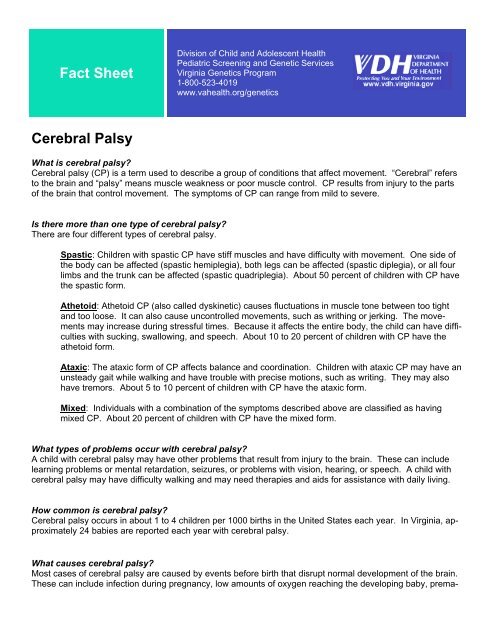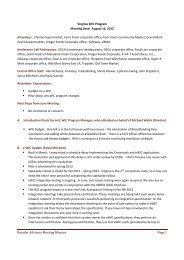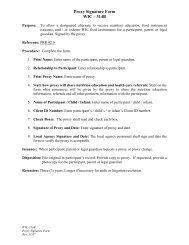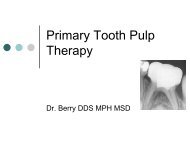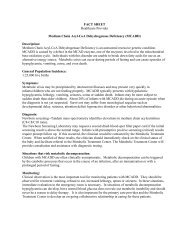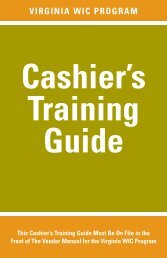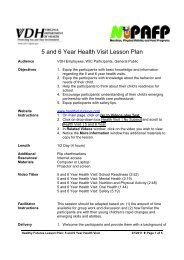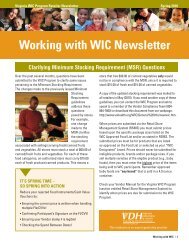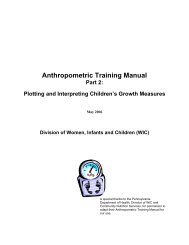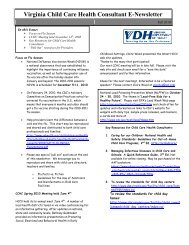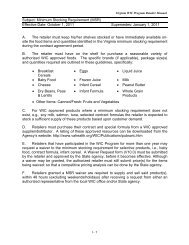Fact Sheet Cerebral Palsy - Office of Family Health Services
Fact Sheet Cerebral Palsy - Office of Family Health Services
Fact Sheet Cerebral Palsy - Office of Family Health Services
Create successful ePaper yourself
Turn your PDF publications into a flip-book with our unique Google optimized e-Paper software.
<strong>Fact</strong> <strong>Sheet</strong>Division <strong>of</strong> Child and Adolescent <strong>Health</strong>Pediatric Screening and Genetic <strong>Services</strong>Virginia Genetics Program1-800-523-4019www.vahealth.org/genetics<strong>Cerebral</strong> <strong>Palsy</strong>What is cerebral palsy?<strong>Cerebral</strong> palsy (CP) is a term used to describe a group <strong>of</strong> conditions that affect movement. “<strong>Cerebral</strong>” refersto the brain and “palsy” means muscle weakness or poor muscle control. CP results from injury to the parts<strong>of</strong> the brain that control movement. The symptoms <strong>of</strong> CP can range from mild to severe.Is there more than one type <strong>of</strong> cerebral palsy?There are four different types <strong>of</strong> cerebral palsy.Spastic: Children with spastic CP have stiff muscles and have difficulty with movement. One side <strong>of</strong>the body can be affected (spastic hemiplegia), both legs can be affected (spastic diplegia), or all fourlimbs and the trunk can be affected (spastic quadriplegia). About 50 percent <strong>of</strong> children with CP havethe spastic form.Athetoid: Athetoid CP (also called dyskinetic) causes fluctuations in muscle tone between too tightand too loose. It can also cause uncontrolled movements, such as writhing or jerking. The movementsmay increase during stressful times. Because it affects the entire body, the child can have difficultieswith sucking, swallowing, and speech. About 10 to 20 percent <strong>of</strong> children with CP have theathetoid form.Ataxic: The ataxic form <strong>of</strong> CP affects balance and coordination. Children with ataxic CP may have anunsteady gait while walking and have trouble with precise motions, such as writing. They may alsohave tremors. About 5 to 10 percent <strong>of</strong> children with CP have the ataxic form.Mixed: Individuals with a combination <strong>of</strong> the symptoms described above are classified as havingmixed CP. About 20 percent <strong>of</strong> children with CP have the mixed form.What types <strong>of</strong> problems occur with cerebral palsy?A child with cerebral palsy may have other problems that result from injury to the brain. These can includelearning problems or mental retardation, seizures, or problems with vision, hearing, or speech. A child withcerebral palsy may have difficulty walking and may need therapies and aids for assistance with daily living.How common is cerebral palsy?<strong>Cerebral</strong> palsy occurs in about 1 to 4 children per 1000 births in the United States each year. In Virginia, approximately24 babies are reported each year with cerebral palsy.What causes cerebral palsy?Most cases <strong>of</strong> cerebral palsy are caused by events before birth that disrupt normal development <strong>of</strong> the brain.These can include infection during pregnancy, low amounts <strong>of</strong> oxygen reaching the developing baby, prema-
ture birth, and other problems. A small number <strong>of</strong> cases <strong>of</strong> cerebral palsy may be caused by lack <strong>of</strong> oxygenduring birth or infection or injury after birth. The cause may also involve genetic factors.<strong>Cerebral</strong> palsy can be the only birth defect a child has (an isolated finding), but it can also occur with otherbirth defects as part <strong>of</strong> a syndrome (a collection <strong>of</strong> findings). The way in which a syndrome is passed throughthe family or the chance <strong>of</strong> having another child with cerebral palsy is specific to the given syndrome. A geneticcounselor or geneticist can help you to determine the risks for your family and situation.How is cerebral palsy treated?Children with cerebral palsy <strong>of</strong>ten receive physical therapy to improve muscle strength and joint movementand occupational therapy to help with daily skills. Braces, splints, or casts may be used to prevent contractures(shortening <strong>of</strong> muscles that limits joint movement). Sometimes medications can reduce muscle stiffening.In some children, surgery may be considered to improve joint movement.Where can I go for more information about cerebral palsy?United <strong>Cerebral</strong> <strong>Palsy</strong> Association, Inc.www.ucpa.org1-202-776-0406March <strong>of</strong> Dimes Birth Defects Foundationwww.modimes.org1-888-MODIMES (1-888-663-4637)


